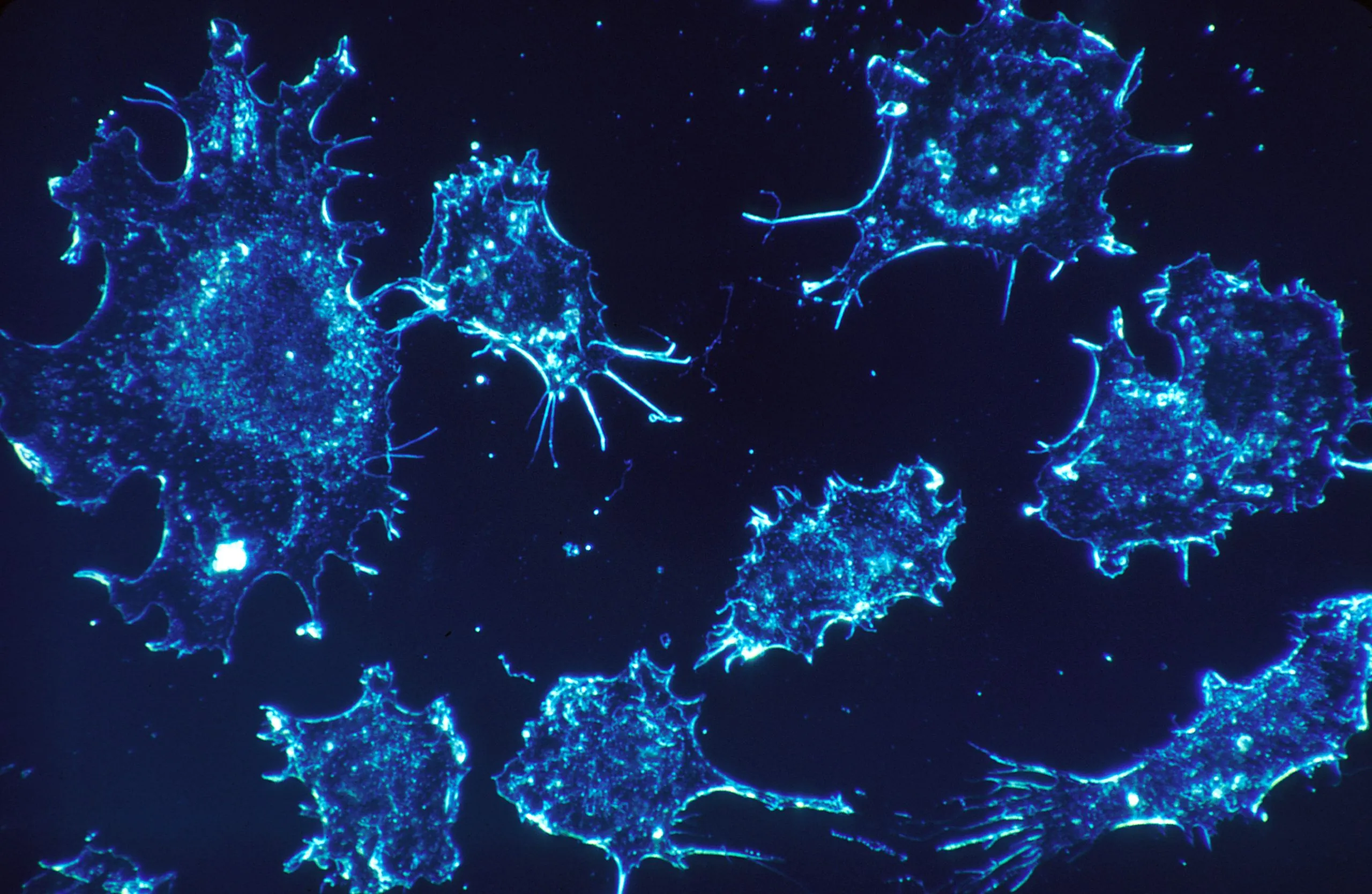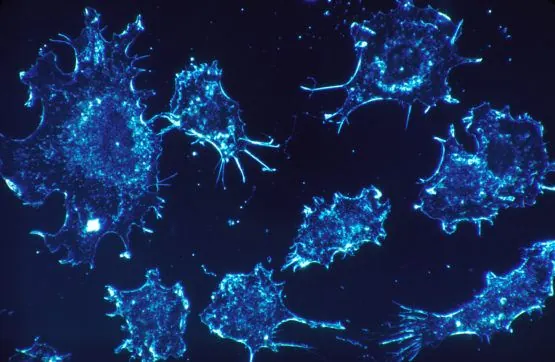Lately the focus has been on the removal of senescent cells as a therapy to treat age-related diseases by directly addressing one of the processes of aging – senescent cell accumulation. Senescent cells are simply cells that have become damaged or have reached their maximum number of divisions. Normally these cells are shut down by apoptosis, a kind of self destruct program in the cell ready to be disposed of by the immune system. Unfortunately as we age more and more of these cells accumulate and they cause inflammation and contribute to various age-related diseases such as, atherosclerosis[1], osteoporosis[2][3] and cancer. The removal of these cells has been suggested as the solution to this problem and it has the potential not only to increase the period people spend healthy but also improve patient outcomes for chemotherapy.
A new research paper hot off the press shows another connection that in retrospect should have been obvious, the connection between cellular senescence, cancer[4] and the side effects of chemotherapy[5].
Chemotherapy is extremely toxic and damages and deregulates a number of cellular functions in the body, the therapy works by inducing cancer cells to become senescent, but this process also causes a great deal of collateral damage that stresses healthy cells too and causes a significant number of them to become senescent. These populations of senescent cells are already accumulating naturally as part of the aging process anyway and chemotherapy increases their numbers even more. In a very real sense, a course of chemotherapy could be considered accelerating this particular aspect of aging.
Senescent cells do not divide or support the tissue they are a part of, but instead emit a range of potentially harmful chemical signals, these encourage other nearby cells to also enter the same senescent state. Their presence causes many problems: they degrade tissue function, increase levels of chronic inflammation, and can increase the risk of cancer as this latest paper discusses.
Cellular Senescence Promotes Adverse Effects of Chemotherapy and Cancer Relapse
Abstract
Cellular senescence suppresses cancer by irreversibly arresting cell proliferation. Senescent cells acquire a pro-inflammatory senescence-associated secretory phenotype. Many genotoxic chemotherapies target proliferating cells non-specifically, often with adverse reactions. In accord with prior work, we show that several chemotherapeutic drugs induce senescence of primary murine and human cells. Using a transgenic mouse that permits tracking and eliminating senescent cells, we show that therapy-induced senescent (TIS) cells persist and contribute to local and systemic inflammation. Eliminating TIS cells reduced several short- and long-term effects of the drugs, including bone marrow suppression, cardiac dysfunction, cancer recurrence and physical activity and strength. Consistent with our findings in mice, the risk of chemotherapy-induced fatigue was significantly greater in humans with increased expression of a senescence marker in T-cells prior to chemotherapy. These findings suggest that senescent cells can cause certain chemotherapy side effects, providing a new target to reduce the toxicity of anti-cancer treatments.
In conclusion chemotherapy causes the rapid accumulation of senescent cells and ultimately in the long run is bad for the patient due to driving this aging process and the risks that entails. However until alternatives such as Immunotherapy arrive, senolytic therapies could help to reduce the negative impact of chemotherapy while we wait for better things to replace it.
Literature
[1] Childs, B. G., Baker, D. J., Wijshake, T., Conover, C. A., Campisi, J., & van Deursen, J. M. (2016). Senescent intimal foam cells are deleterious at all stages of atherosclerosis. Science, 354(6311), 472-477.
[2] Farr, J. N., Fraser, D. G., Wang, H., Jaehn, K., Ogrodnik, M. B., Weivoda, M. M., … & Bonewald, L. F. (2016). Identification of senescent cells in the bone microenvironment. Journal of Bone and Mineral Research, 31(11), 1920-1929.
[3] Xu, M., Bradley, E. W., Weivoda, M. M., Hwang, S. M., Pirtskhalava, T., Decklever, T., … & Lowe, V. (2016). Transplanted senescent cells induce an osteoarthritis-like condition in mice. The Journals of Gerontology Series A: Biological Sciences and Medical Sciences, glw154.
[4] Coppé, J. P., Desprez, P. Y., Krtolica, A., & Campisi, J. (2010). The senescence-associated secretory phenotype: the dark side of tumor suppression. Annual review of pathology, 5, 99.
[5] Demaria, M., O’Leary, M. N., Chang, J., Shao, L., Liu, S., Alimirah, F., … & Alston, S. (2016). Cellular Senescence Promotes Adverse Effects of Chemotherapy and Cancer Relapse. Cancer Discovery, CD-16.



